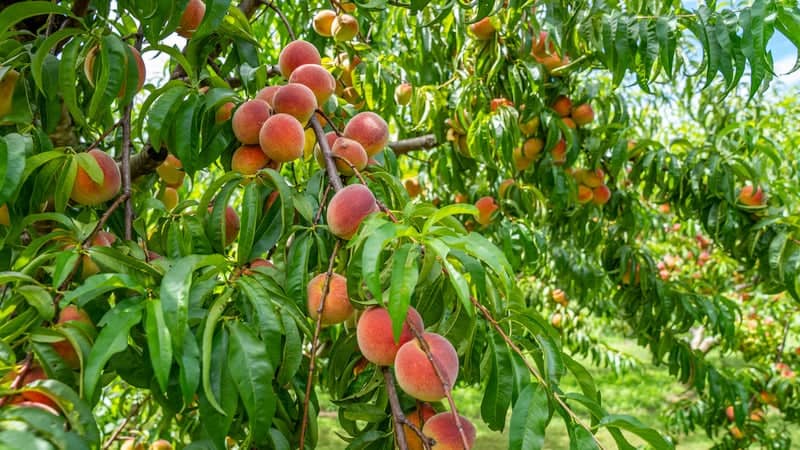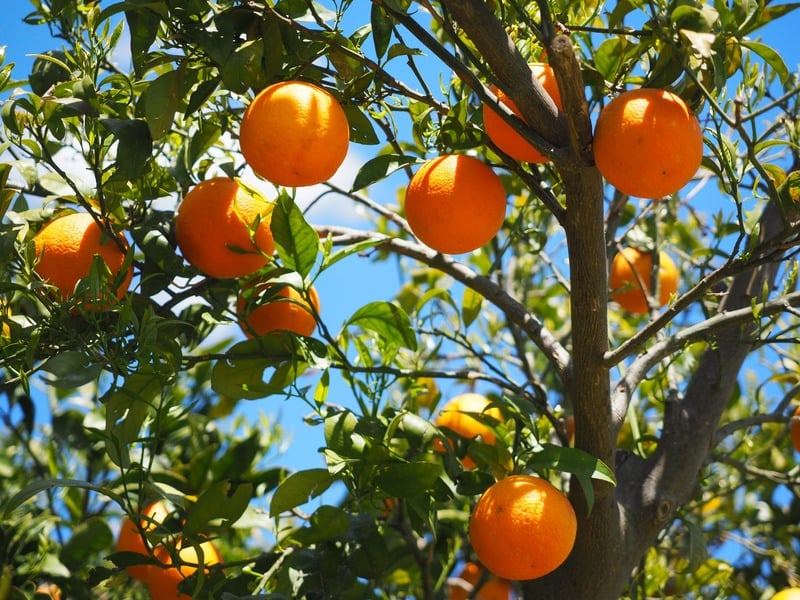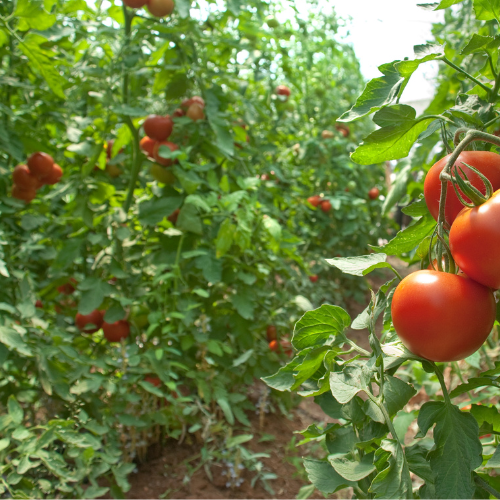
Chinch Bugs vs. Sod Webworms: Spotting the Difference in Your Florida Lawn
Whether you’re a new homeowner in Florida or a long-time resident, you already know that conditions in the Sunshine State…

Growing fruit trees in your Florida garden can be an incredibly rewarding experience. Imagine stepping into your backyard and plucking fresh, sun-ripened fruit straight from the branch. Not only do fruit trees provide delicious, homegrown produce, but they also add beauty and shade to your landscape. Plus, tending to fruit trees can be a relaxing and fulfilling hobby that connects you with nature and the seasons. That’s why we love our fruit trees!
Fruit trees also offer environmental benefits, such as providing habitat for local wildlife and helping to reduce your carbon footprint by producing food right at home. Whether you’re a seasoned gardener or just starting out, fruit trees can be a wonderful addition to your Florida property.
Since we are in Ruskin, this part of the state is our home turf, and we know it’s pros and cons. South Florida’s warm, tropical climate is ideal for growing a wide variety of fruit trees. Some of the best options include:
These trees thrive in the region’s heat and humidity, offering both delicious fruits and attractive foliage to enhance your garden. Remember to choose varieties that are well-suited to South Florida’s climate for the best results.

When it comes to fertilizing fruit trees, it’s essential to provide a balanced mix of nutrients. As a general recommendation, we suggest using a 10-4-10 fertilizer, which is well-balanced for most citrus trees. This formulation provides the right proportions of nitrogen (N), phosphorus (P), and potassium (K) to support healthy growth and fruit production.
However, it’s important to note that soil conditions can vary significantly from one location to another. That’s why we always recommend getting your soil tested before planting fruit trees or starting a fertilization regimen. Soil pH plays a crucial role in nutrient availability, and if it’s too high or too low, your fruit trees may struggle to thrive.
At Council Oxford, we offer professional soil testing services. Our team of experts can analyze your soil and provide tailored recommendations to ensure your fruit trees get the best possible start and ongoing care. We can help you determine the ideal fertilizer composition and application schedule based on your specific soil conditions and the types of fruit trees you’re growing.
In South Florida, we recommend fertilizing your fruit trees every three months. This frequent fertilization schedule is necessary due to the region’s particularly sandy soils, which don’t retain nutrients as well as other soil types. The regular application of fertilizer ensures that your trees have a consistent supply of essential nutrients throughout the year.
For most fruit trees in South Florida, you should plan to fertilize in:
This schedule allows you to provide nutrients during key growth periods and fruit development stages. Remember to water your trees thoroughly after applying fertilizer to help distribute the nutrients and prevent root burn.
In North Florida, the fertilization schedule for fruit trees is slightly different due to the cooler climate and different soil composition. Generally, you should fertilize fruit trees in North Florida three times a year:
The soil in North Florida tends to retain nutrients better than the sandy soils of South Florida, which is why fewer applications are typically needed. However, it’s still crucial to monitor your trees’ health and adjust the fertilization schedule if necessary.
Central Florida’s climate and soil conditions fall somewhere between those of North and South Florida. For fruit trees in this region, we recommend a fertilization schedule of three to four times per year:
The exact timing and frequency may vary depending on the specific type of fruit tree and local soil conditions. As with other regions, it’s best to have your soil tested to determine the optimal fertilization plan for your Central Florida fruit trees.
While many fruit trees thrive in Florida, each species has its own unique care requirements. Here are some specific recommendations for popular fruit trees:
These tropical favorites do well in South Florida. They prefer well-draining soil and full sun. Fertilize with a balanced fertilizer (like 6-6-6) three times a year.
Low-chill peach varieties can be grown in North and Central Florida. They need full sun and well-draining soil. Fertilize with a balanced fertilizer in early spring and after harvest.
These nutrient-dense fruits grow well in South and Central Florida. They need good drainage and protection from strong winds. Fertilize young trees monthly and mature trees three times a year.
Citrus trees thrive throughout Florida. They prefer slightly acidic soil and full sun. Use a citrus-specific fertilizer three times a year.
Fruit trees often become infected with a wide variety of diseases such as anthracnose, leaf spot, blight, citrus canker, and more. As well as insect issues such as whitefly, thrips, aphids, and worms. Always monitor your fruit trees for insect and disease damage. We always recommend using a systemic fungicide and insecticide to help protect your fruit tree from pests.
Regular inspections of your trees can help catch problems early. Look for discolored leaves, unusual growths, or signs of insect activity. If you notice any issues, it’s best to address them promptly to prevent the problem from spreading or worsening.
To maximize the fruit production of your trees, follow these key practices:
Remember, getting the most fruit from your trees requires a holistic approach. Fertilizing and watering are important, but you need to combine these with consistent monitoring and proactive pest management for the best results.
At Council Oxford, we understand that maintaining fruit trees can be challenging. Our team of experts is always available to provide guidance, conduct soil tests, and recommend tailored care plans to help you get the most out of your fruit trees. Don’t hesitate to reach out if you need assistance reaching your fruit tree’s potential!

If you’d like personalized guidance on how to help your fruit trees thrive, give us a call or come into our store and one of our experts can help you!